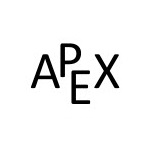1.1.1: Ejercicios 1.1
- Page ID
- 113942
\( \newcommand{\vecs}[1]{\overset { \scriptstyle \rightharpoonup} {\mathbf{#1}} } \)
\( \newcommand{\vecd}[1]{\overset{-\!-\!\rightharpoonup}{\vphantom{a}\smash {#1}}} \)
\( \newcommand{\id}{\mathrm{id}}\) \( \newcommand{\Span}{\mathrm{span}}\)
( \newcommand{\kernel}{\mathrm{null}\,}\) \( \newcommand{\range}{\mathrm{range}\,}\)
\( \newcommand{\RealPart}{\mathrm{Re}}\) \( \newcommand{\ImaginaryPart}{\mathrm{Im}}\)
\( \newcommand{\Argument}{\mathrm{Arg}}\) \( \newcommand{\norm}[1]{\| #1 \|}\)
\( \newcommand{\inner}[2]{\langle #1, #2 \rangle}\)
\( \newcommand{\Span}{\mathrm{span}}\)
\( \newcommand{\id}{\mathrm{id}}\)
\( \newcommand{\Span}{\mathrm{span}}\)
\( \newcommand{\kernel}{\mathrm{null}\,}\)
\( \newcommand{\range}{\mathrm{range}\,}\)
\( \newcommand{\RealPart}{\mathrm{Re}}\)
\( \newcommand{\ImaginaryPart}{\mathrm{Im}}\)
\( \newcommand{\Argument}{\mathrm{Arg}}\)
\( \newcommand{\norm}[1]{\| #1 \|}\)
\( \newcommand{\inner}[2]{\langle #1, #2 \rangle}\)
\( \newcommand{\Span}{\mathrm{span}}\) \( \newcommand{\AA}{\unicode[.8,0]{x212B}}\)
\( \newcommand{\vectorA}[1]{\vec{#1}} % arrow\)
\( \newcommand{\vectorAt}[1]{\vec{\text{#1}}} % arrow\)
\( \newcommand{\vectorB}[1]{\overset { \scriptstyle \rightharpoonup} {\mathbf{#1}} } \)
\( \newcommand{\vectorC}[1]{\textbf{#1}} \)
\( \newcommand{\vectorD}[1]{\overrightarrow{#1}} \)
\( \newcommand{\vectorDt}[1]{\overrightarrow{\text{#1}}} \)
\( \newcommand{\vectE}[1]{\overset{-\!-\!\rightharpoonup}{\vphantom{a}\smash{\mathbf {#1}}}} \)
\( \newcommand{\vecs}[1]{\overset { \scriptstyle \rightharpoonup} {\mathbf{#1}} } \)
\( \newcommand{\vecd}[1]{\overset{-\!-\!\rightharpoonup}{\vphantom{a}\smash {#1}}} \)
Términos y Conceptos
Ejercicio\(\PageIndex{1}\)
En sus propias palabras, ¿qué significa “multiplicación y división están en el mismo nivel”?
- Contestar
-
Las respuestas variarán.
Ejercicio\(\PageIndex{2}\)
En una expresión con suma y multiplicación, ¿qué operación completa primero?
- Contestar
-
Multiplicación
Ejercicio\(\PageIndex{3}\)
En sus propias palabras, ¿qué se entiende por “paréntesis implícitos”? Dé un ejemplo.
- Contestar
-
Las respuestas variarán.
Ejercicio\(\PageIndex{4}\)
T/F: En una expresión con solo suma y resta restante, debe completar toda la suma antes de comenzar la resta. Explique.
- Contestar
-
F; debes completarlos de izquierda a derecha
Ejercicio\(\PageIndex{5}\)
T/F: En la expresión\(−2^{2}\), solo “2” es cuadrado, no “−2”. Explique.
- Contestar
-
T; no hay paréntesis, entonces primero cuadras $2$ y luego haces que la respuesta sea negativa.
Problemas
En ejercicios\(\PageIndex{6}\) -\(\PageIndex{15}\), simplificar las expresiones dadas.
Ejercicio\(\PageIndex{6}\)
\(\displaystyle -2(11-5) \div 3 + 2^3\)
- Contestar
-
\(4\)
Ejercicio\(\PageIndex{7}\)
\(\frac{3}{5}+\frac{2}{3}\div\frac{5}{6}\)
- Contestar
-
\(\frac{7}{5}\)
Ejercicio\(\PageIndex{8}\)
\(\left(\frac{2}{3}\right)^{2}-\frac{1}{6}\)
- Contestar
-
\(\frac{5}{18}\)
Ejercicio\(\PageIndex{9}\)
\(\displaystyle (13+7) \div 4 -3^2\)
- Contestar
-
\(-4\)
Ejercicio\(\PageIndex{10}\)
\(\left(5-\frac{1}{2}\right)^{3}\)
- Contestar
-
\(\frac{729}{8}\)
Ejercicio\(\PageIndex{11}\)
\((2)(-2)\div\frac{1}{2}\)
- Contestar
-
\(-8\)
Ejercicio\(\PageIndex{12}\)
\(\displaystyle \frac{2-4(3-5)}{6-7+3} -\sqrt{25-9}\)
- Contestar
-
\(1\)
Ejercicio\(\PageIndex{13}\)
\(\displaystyle \sqrt{\frac{2^2+3^2+5}{2-(-1)^3} -2}+6\)
- Contestar
-
\(8\)
Ejercicio\(\PageIndex{14}\)
\(\displaystyle \frac{4-1(-2)}{\frac{1}{2}+1}-2\)
- Contestar
-
\(2\)
Ejercicio\(\PageIndex{15}\)
\(-4^{2}+5^{2}-2\times 3+1\)
- Contestar
-
\(4\)
En ejercicios\(\PageIndex{16}\) —\(\PageIndex{21}\), evaluar el enunciado matemático descrito, o determinar cómo los cambios descritos afectan a otras variables en el enunciado según corresponda.
Ejercicio\(\PageIndex{16}\)
Un corredor sale de su casa y corre recto durante 30 minutos a un ritmo de 1 mi cada 10 minutos (una milla de 10 minutos). Ella hace un giro a la izquierda de 90 grados y luego corre recto durante 40 minutos al mismo ritmo. ¿Cuál es la distancia entre su ubicación actual y su hogar?
- Contestar
-
5 millas
Ejercicio\(\PageIndex{17}\)
El número de Reynold, que ayuda a identificar si un flujo de fluido es turbulento o no, viene dado por\(Re=\frac{\rho uD}{\mu}\). If \(\rho\), \(u\), and \(D\) are held constant while \(\mu\) increases, does \(Re\) increase, decrease, or stay the same?
- Contestar
-
\(Re\) decreases.
Ejercicio\(\PageIndex{18}\)
Considera una caja de base cuadrada cuya altura es el doble de la longitud de la base del costado. Si la longitud de la base cuadrada es de 3 pies, ¿cuál es el volumen de la caja? (¡No olvides tus unidades!)
- Contestar
-
54 pies\(^3\)
Ejercicio\(\PageIndex{19}\)
La velocidad de las ondas periódicas,\(v\), is given by \(v=\lambda f\) where \(\lambda\) is the length of the waves and \(f\) is the frequency of the waves. If the wavelength is held constant while the frequency is tripled, what happens to the velocity of the waves? Be as descriptive as possible.
- Contestar
-
La velocidad se triplicó.
Ejercicio\(\PageIndex{20}\)
La capacitancia,\(C\), of a parallel plate capacitor is given by \(C=\frac{k \epsilon_0 A}{d}\) where \(d\) is the distance between the plates. If \(k\), \(\epsilon_0\), and \(A\) are held constant while the distance between the plates decreases, does the capacitance increase, decrease, or stay the same?
- Contestar
-
La capacitancia aumenta.
Ejercicio\(\PageIndex{21}\)
Considera una caja cuadrada cuya altura es la mitad de la longitud de los lados para la base. Si la superficie de la base es de 16 pies\(^2\), what is the volume of the box?
- Contestar
-
32 pies\(^3\)
En ejercicios\(\PageIndex{22}\) —\(\PageIndex{25}\), evaluar el trabajo dado para su corrección. ¿Es correcta la respuesta final? Si no es así, describa el/los error (es) en la solución.
Ejercicio\(\PageIndex{22}\)
\[\begin{split} 12 \div 6 \times 4 - (3-4)^2 &= 12 \div 6 \times 4 - (-1)^2 \\ &= 12 \div 6 \times 4 +1 \\ &= 12 \div 24 + 1 \\ &= \frac{1}{2} + 1 \\ &= \frac{3}{2} \end{split}\]
- Contestar
-
La respuesta final no es correcta. Hay dos errores: en el segundo paso,\(-(-1)^2\) should give \(-1\), not \(+1\); in the third step, the division should have been done before the multiplication.
Ejercicio\(\PageIndex{23}\)
\[\begin{split} -3^2 + 6 \div 2 + (-4)^2 & = -9 + 6 \div 2 + (-4)^2 \\ & = -9 + 6 \div 2 + 16 \\ & = -9 + 3 + 16 \\ & = 10 \end{split}\]
- Contestar
-
La respuesta final es correcta.
Ejercicio\(\PageIndex{24}\)
\[\begin{split} \frac{2+(3-5)}{2-2(6+3)} + \sqrt{64+36} & = \frac{2+(-2)}{2-2(6+3)} + \sqrt{64+36} \\ & = \frac{2-2}{2-2(9)} + \sqrt{64+36} \\ & = \frac{2-2}{2-2(9)} + 8+6 \\ & = \frac{2-2}{2-18} +8 + 6 \\ & = \frac{0}{-16} + 14 \\ & = 14 \end{split}\]
- Contestar
-
La respuesta final no es correcta. En la raíz cuadrada, se deben agregar 64 y 36 antes de tomar la raíz cuadrada.
Ejercicio\(\PageIndex{25}\)
\[\begin{split} \frac{(-3+1)(2(-3))-((-3)^2-3)(1)}{(-3+1)^2} & = \frac{(-3+1)(2(-3)) - ((-3)^2-3)(1)}{(-2)^2} \\ & = \frac{(-2)(-6)-((-3)^2-3)(1)}{(-2)^2} \\ & = \frac{(-2)(-6) -(9-3)(1)}{(-2)^2} \\ & = \frac{(-2)(-6) -(6)(1)}{4} \\ & = \frac{-12-6}{4} \\ & = \frac{-18}{4} \\ & = \frac{-9}{2} \end{split}\]
- Contestar
-
La respuesta final no es correcta. En el quinto paso,\((-2)(-6)\) should be \(12\), not \(-12\).


